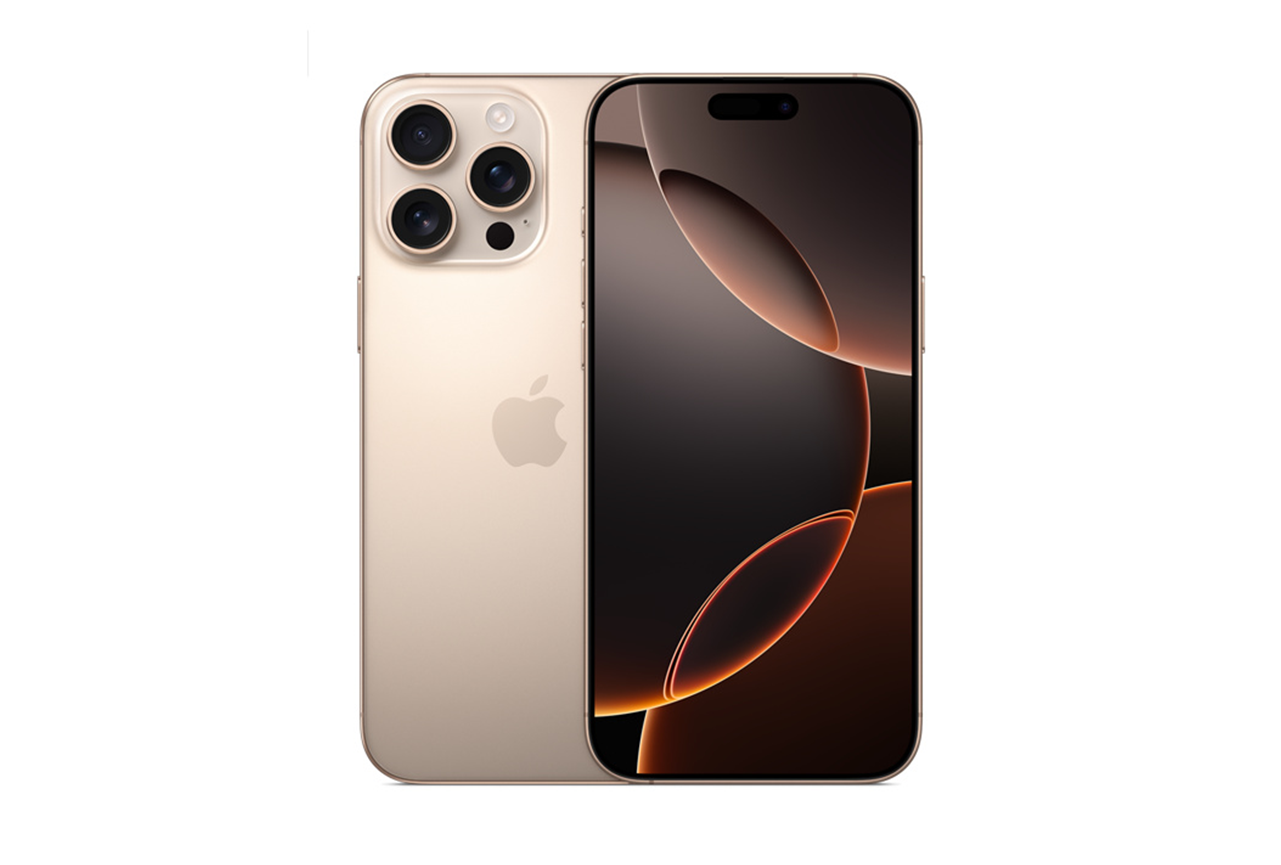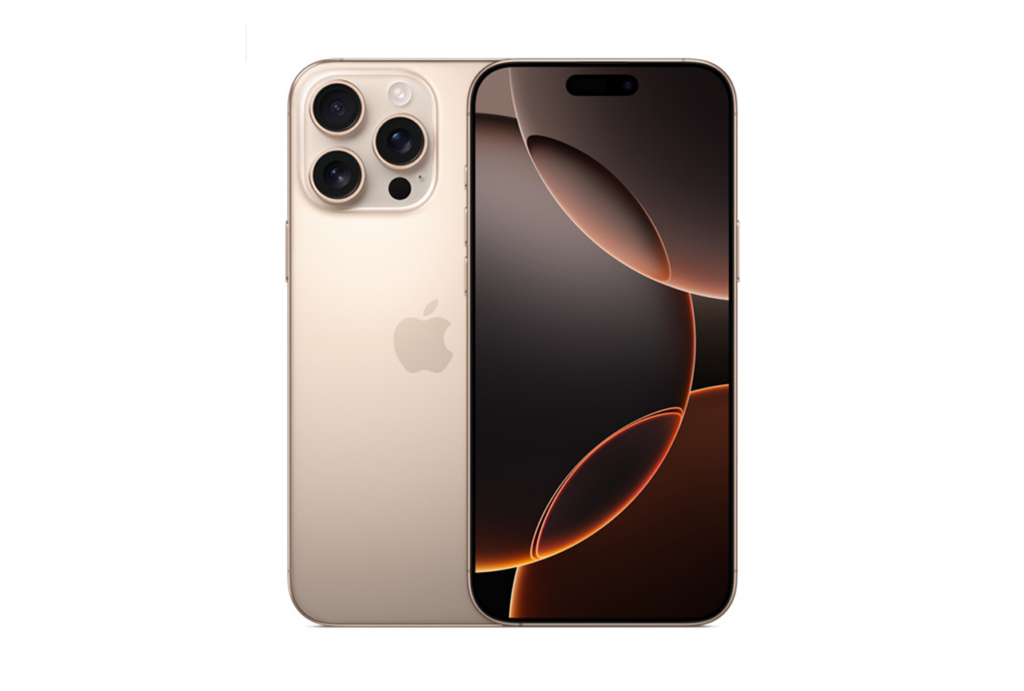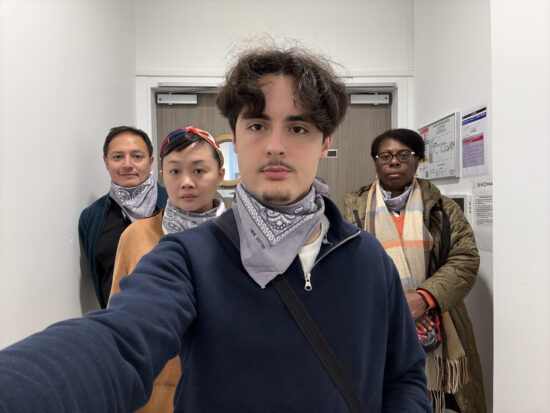We put the Apple iPhone 16 Pro Max through our rigorous DXOMARK Selfie test suite to measure its performance in photo and video from an end-user perspective. This article breaks down how the device fared in a variety of tests and several common use cases and is intended to highlight the most important results of our testing with an extract of the captured data.
Overview
Key front camera specifications:
- 12MP sensor
- f/1.9-aperture lens
- Autofocus
- 4K video at 24/25/30/60 fps, 1080p at 25/30/60/120 fps (4K at 30 fps tested)
Scoring
Sub-scores and attributes included in the calculations of the global score.

Apple iPhone 16 Pro Max


 2nd
2nd 2nd
2ndPros
- Accurate exposure and wide dynamic range, high contrast on HDR screens.
- Reliable autofocus and wide depth of field
- High levels of detail, in both photo and video mode
- Wide simulated aperture and natural bokeh effect in portrait mode
Cons
- Noise in photos and videos
- White balance casts in photos
- Occasional sharpness differences between video frames when walking while recording
The Apple iPhone 16 Pro Max delivered outstanding results in the DXOMARK Selfie tests, securing the top position in our ranking, despite using front camera hardware that is very similar to last year’s model, and only minor improvements on the software side.
In our tests, Apple’s HEIC image files with embedded HDR data looked stunning when viewed on a dedicated HDR display. Image and video results were striking in the Photo app on macOS Sonoma on an XDR Display and the Photo app on the iPhone 15 Pro Max display alike, with brighter and more vivid rendering than ever. However, users of displays, devices or apps that do not support Apple’s photo HDR format will only see JPG images without the HDR effect.
Test summary
About DXOMARK Selfie tests: For scoring and analysis, DXOMARK engineers capture and evaluate more than 1,500 test images both in controlled lab environments and in outdoor, indoor and low-light natural scenes, using the front camera’s default settings. The photo protocol is designed to take into account the user’s needs and is based on typical shooting scenarios, such as close-up and group selfies. The evaluation is performed by visually inspecting images against a reference of natural scenes, and by running objective measurements on images of charts captured in the lab under different lighting conditions from 1 to 1,000+ lux and color temperatures from 2,300K to 6,500K. For more information about the DXOMARK Selfie test protocol, click here. More details on how we score smartphone cameras are available here. The following section gathers key elements of DXOMARK’s exhaustive tests and analyses .Full performance evaluations are available upon request. Please contact us on how to receive a full report.
Photo
Apple iPhone 16 Pro Max
150
In our tests, the Apple iPhone 16 Pro Max delivered excellent still selfie images, with an overall look that was close to the predecessor 15 Pro Max. Improvements were mostly noticeable in terms of texture and noise.
Like its predecessor, the new model did particularly well for exposure, capturing a wide dynamic range, delivering excellent subject exposure and providing high contrast levels with images viewed on HDR displays. Overall exposure results were even slightly improved over the 15 Pro Max. Color was on par with the best in class, even though the Google Pixel 9 Pro XL delivered better white balance and skin tones in some outdoor scenes.
The level of captured detail was quite similar to last year’s device, with nice face detail across all shooting distances, thanks to the excellent front camera autofocus. Lower noise levels were a significant improvement over the 15 Pro Max, but some slight luminance noise remained noticeable in the image background. The bokeh effect which provided the strong blur of a wide simulated aperture, was another highlight of the iPhone 16 Pro Max’s front camera photo mode.

Color
Apple iPhone 16 Pro Max
110
Exposure and color are the key attributes for technically good pictures. For exposure, the main attribute evaluated is the brightness of the face(s) in various use cases and light conditions. Other factors evaluated are the contrast and the dynamic range, eg. the ability to render visible details in both bright and dark areas of the image. Repeatability is also important because it demonstrates the camera's ability to provide the same rendering when shooting consecutive images in a row.
For color, the image quality attributes analyzed are skin-tone rendering, white balance, color shading, and repeatability.

Focus
Apple iPhone 16 Pro Max
105
Autofocus tests evaluate the accuracy of the focus on the subject’s face, the repeatability of an accurate focus, and the depth of field. While a shallow depth of field can be pleasant for a single-subject selfie or close-up shot, it can be problematic in specific conditions such as group selfies; both situations are tested. Focus accuracy is also evaluated in all the real-life images taken, from 30cm to 150cm, and in low light to outdoor conditions.

Texture
Apple iPhone 16 Pro Max
79
Texture tests analyze the level of details and the texture of subjects in the images taken in the lab as well as in real-life scenarios. For natural shots, particular attention is paid to the level of details in facial features, such as the eyes. Objective measurements are performed on chart images taken in various lighting conditions from 1 to 1000 lux and different kinds of dynamic range conditions. The charts used are the proprietary DXOMARK chart (DMC) and the Dead Leaves chart.

Noise
Apple iPhone 16 Pro Max
94
Noise tests analyze various attributes of noise such as intensity, chromaticity, grain, and structure on real-life images as well as images of charts taken in the lab. For natural images, particular attention is paid to the noise on faces, but also on dark areas and high dynamic range conditions. Objective measurements are performed on images of charts taken in various conditions from 1 to 1000 lux and different kinds of dynamic range conditions. The chart used is the DXOMARK Dead Leaves chart and the standardized measurement such as Visual Noise derived from ISO 15739.
The artifacts evaluation looks at lens shading, chromatic aberrations, distortion measurement on the Dot chart and MTF, and ringing measurements on the SFR chart in the lab. Particular attention is paid to ghosting, quantization, halos, and hue shifts on the face among others. The more severe and the more frequent the artifact, the higher the point deduction on the score. The main artifacts observed and corresponding point loss are listed below.
Bokeh is tested in one dedicated mode, usually portrait or aperture mode, and analyzed by visually inspecting all the images captured in the lab and in natural conditions. The goal is to reproduce portrait photography comparable to one taken with a DSLR and a wide aperture. The main image quality attributes paid attention to are depth estimation, artifacts, blur gradient, and the shape of the bokeh blur spotlights. Portrait image quality attributes (exposure, color, texture) are also taken into account.
Video
Apple iPhone 16 Pro Max
159
DXOMARK engineers capture and evaluate more than 2 hours of video in controlled lab environments and in natural low-light, indoor and outdoor scenes, using the front camera’s default settings. The evaluation consists of visually inspecting natural videos taken in various conditions and running objective measurements on videos of charts recorded in the lab under different conditions from 1 to 1000+ lux and color temperatures from 2,300K to 6,500K.
The Apple iPhone 16 Pro Max was an outstanding device for recording front camera video, excelling in the exposure, white balance, and stabilization test categories. These strong points resulted in excellent overall selfie video quality and a position among the very best in the DXOMARK Selfie Video ranking.
Compared to the predecessor iPhone 15 Pro Max, noise reduction was improved. This said, its performance in video mode was not flawless, and our testers observed some of the same issues we had already seen on last year’s model, including very slight highlight clipping in HDR scenes and slight skin tone inconsistencies in very low light. Video stabilization was overall highly effective, but occasional variation in sharpness between frames and slight camera shake when moving while recording could be noticeable.

Exposure
Apple iPhone 16 Pro Max
89

Color
Apple iPhone 16 Pro Max
90
Exposure tests evaluate the brightness of the face and the dynamic range, eg. the ability to render visible details in both bright and dark areas of the image. Stability and temporal adaption of the exposure are also analyzed. Image-quality color analysis looks at skin-tone rendering, white balance, color shading, stability of the white balance and its adaption when light is changing.

Texture
Apple iPhone 16 Pro Max
97
Texture tests analyze the level of details and texture of the real-life videos as well as the videos of charts recorded in the lab. Natural video recordings are visually evaluated, with particular attention paid to the level of detail on the facial features. Objective measurements are performed of images of charts taken in various conditions from 1 to 1000 lux. The chart used is the Dead Leaves chart.

Noise
Apple iPhone 16 Pro Max
83
Noise tests analyze various attributes of noise such as intensity, chromaticity, grain, structure, temporal aspects on real-life video recording as well as videos of charts taken in the lab. Natural videos are visually evaluated, with particular attention paid to the noise on faces. Objective measurements are performed on the videos of charts recorded in various conditions from 1 to 1000 lux. The chart used is the DXOMARK visual noise chart.

Stabilization
Apple iPhone 16 Pro Max
84
Stabilization evaluation tests the ability of the device to stabilize footage thanks to software or hardware technologies such as OIS, EIS, or any others means. The evaluation looks at overall residual motion on the face and the background, smoothness and jellow artifacts, during walk and paning use cases in various lighting conditions. The video below is an extract from one of the tested scenes.

Artifacts
Apple iPhone 16 Pro Max
92
Artifacts are evaluated with MTF and ringing measurements on the SFR chart in the lab as well as frame-rate measurements using the LED Universal Timer. Natural videos are visually evaluated by paying particular attention to artifacts such as quantization, hue shift, and face-rendering artifacts among others. The more severe and the more frequent the artifact, the higher the point deduction from the score. The main artifacts and corresponding point loss are listed below











